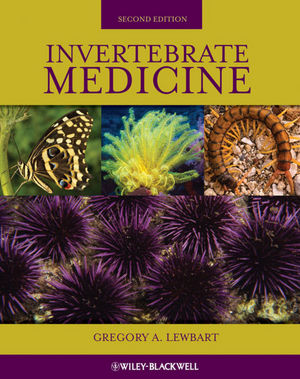

Most ebook files are in PDF format, so you can easily read them using various software such as Foxit Reader or directly on the Google Chrome browser.
Some ebook files are released by publishers in other formats such as .awz, .mobi, .epub, .fb2, etc. You may need to install specific software to read these formats on mobile/PC, such as Calibre.
Please read the tutorial at this link. https://ebooknice.com/page/post?id=faq
We offer FREE conversion to the popular formats you request; however, this may take some time. Therefore, right after payment, please email us, and we will try to provide the service as quickly as possible.
For some exceptional file formats or broken links (if any), please refrain from opening any disputes. Instead, email us first, and we will try to assist within a maximum of 6 hours.
EbookNice Team

Status:
Available0.0
0 reviews Coverage includes sponges, jellyfish, anemones, corals, mollusks, starfish, sea urchins, crabs, crayfish, lobsters, shrimp, hermit crabs, spiders, scorpions, and many more, with chapters organized by taxonomy. New chapters provide information on reef systems, honeybees, butterfly houses, conservation, welfare, and sources of invertebrates and supplies. Invertebrate Medicine, Second Edition is an essential resource for veterinarians in zoo animal, exotic animal and laboratory animal medicine; public and private aquarists; and aquaculturists.Content:
Chapter 1 Introduction (pages 3–6): Gregory A. Lewbart
Chapter 2 Sponges (pages 7–20): Gregory A. Lewbart
Chapter 3 Coelenterates (pages 21–56): Michael K. Stoskopf
Chapter 4 Coral Reef Aquarium Husbandry and Health (pages 57–75): Wade Lehmann
Chapter 5 Turbellarians (pages 77–93): Michael S. Bodri
Chapter 6 Gastropods (pages 95–111): Roxanna Smolowitz
Chapter 7 Cephalopods (pages 113–125): Joseph M. Scimeca
Chapter 8 Bivalves (pages 127–151): Jay F. Levine, Mac Law and Flavio Corsin
Chapter 9 Annelids (pages 153–171): Gregory A. Lewbart
Chapter 10 Horseshoe Crabs (pages 173–185): Stephen A. Smith
Chapter 11 Spiders (pages 187–221): Romain Pizzi
Chapter 12 Scorpions (pages 223–234): Fredric L. Frye
Chapter 13 Crustaceans (pages 235–254): Edward J. Noga, Amy L. Hancock and Robert A. Bullis
Chapter 14 Myriapods (Centipedes and Millipedes) (pages 255–265): John R. Chitty
Chapter 15 Insects (pages 267–283): John E. Cooper
Chapter 16 Honeybees (pages 285–321): Nicolas Vidal?Naquet
Chapter 17 Butterfly Houses (pages 323–334): John E. Cooper and Daniel S. Dombrowski
Chapter 18 Nematodes (pages 335–354): Michael S. Bodri
Chapter 19 Chaetognaths (Arrowworms) (pages 355–364): Laura Foster
Chapter 20 Echinoderms (pages 365–379): Craig A. Harms
Chapter 21 Urochordates (pages 381–388): Robert S. Bakal and Gregory A. Lewbart
Chapter 22 Diagnostic Techniques and Sample Handling (pages 389–400): Ilze K. Berzins, Roxanna M. Smolowitz and Gregory A. Lewbart
Chapter 23 Laws, Rules, and Regulating Agencies for Invertebrates: U.S. and International (pages 401–430): Daniel S. Dombrowski and Margaret E. Cooper
Chapter 24 Neoplasia (pages 431–439): Esther C. Peters, Roxanna M. Smolowitz and Taylor L. Reynolds
Chapter 25 Euthanasia (pages 441–443): Michael J. Murray
Chapter 26 Invertebrate Animal Welfare (pages 445–449): Trevor T. Zachariah
Chapter 27 Invertebrate Health Issues in Conservation (pages 451–462): Timothy R. New
Chapter 28 Sources of Invertebrates and Supplies (pages 463–470): Larry S. Christian
Chapter 29 Reportable Diseases of Invertebrates (pages 471–472): Gregory A. Lewbart